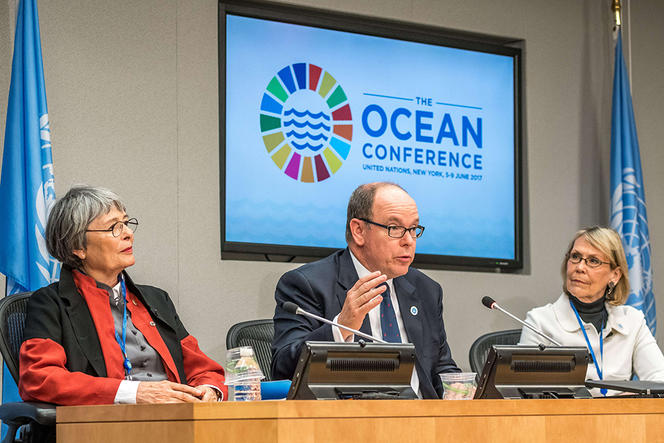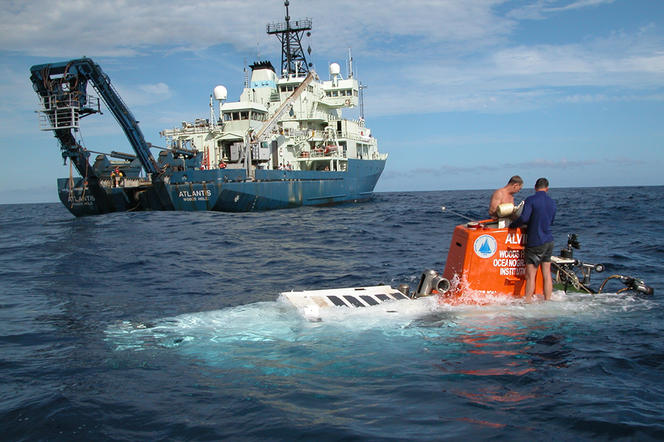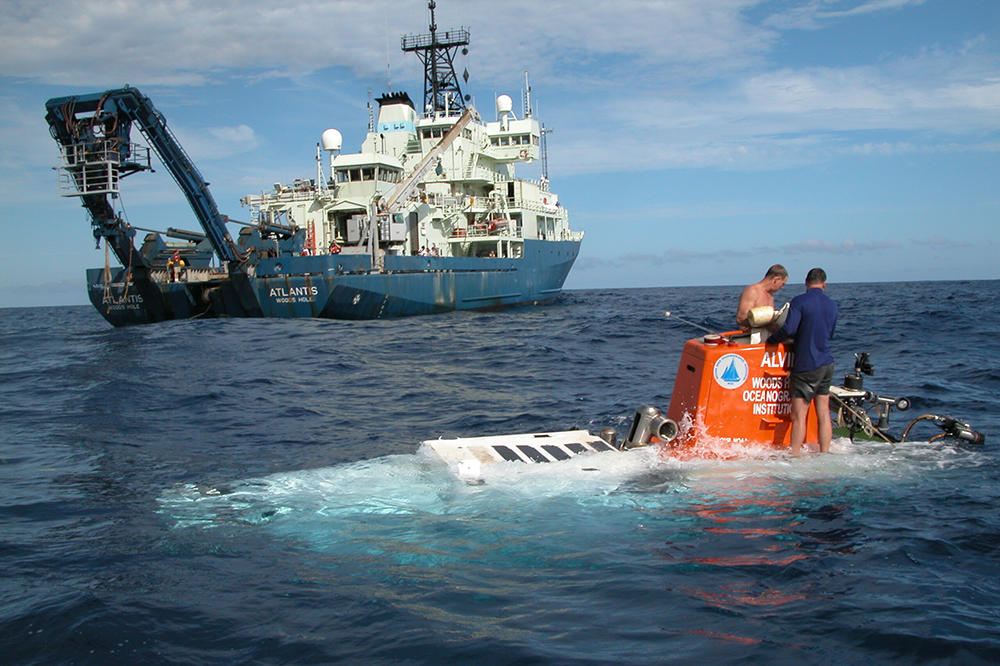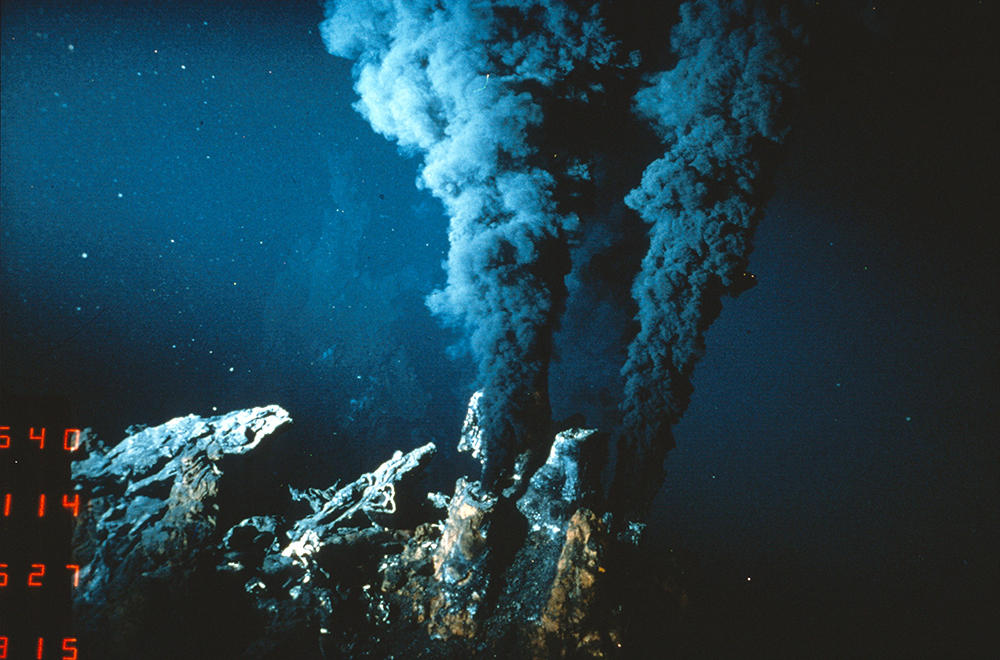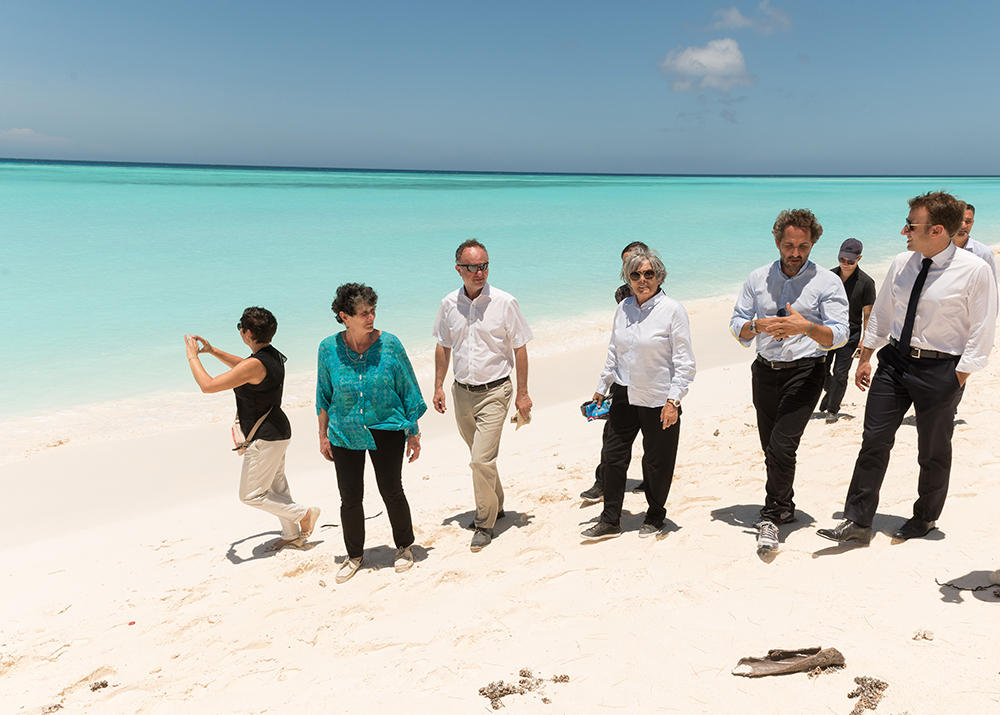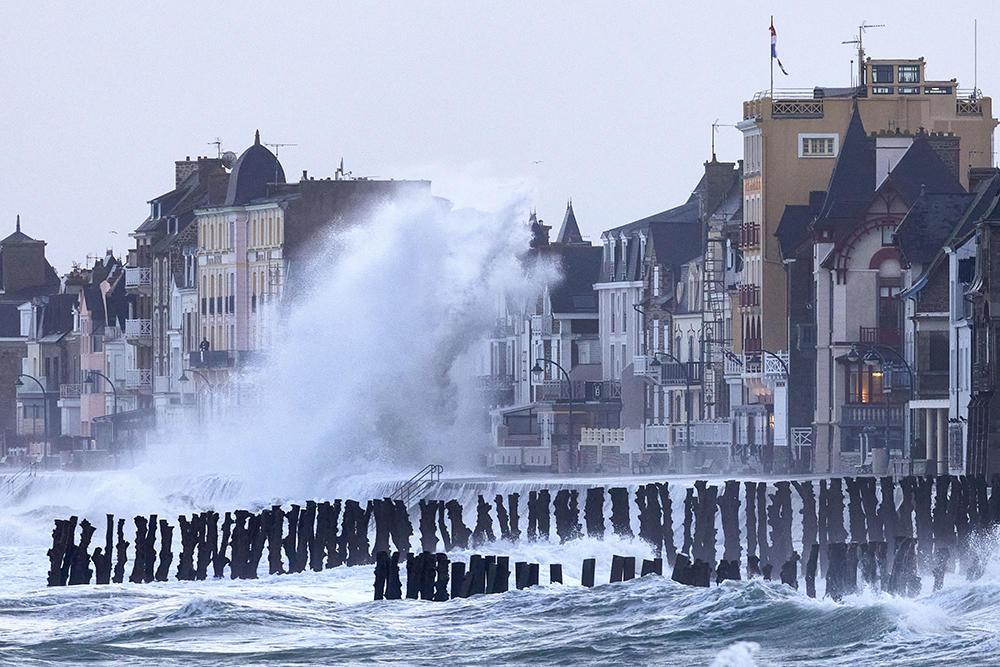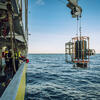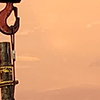You are here
Françoise Gaill, the voice of the oceans
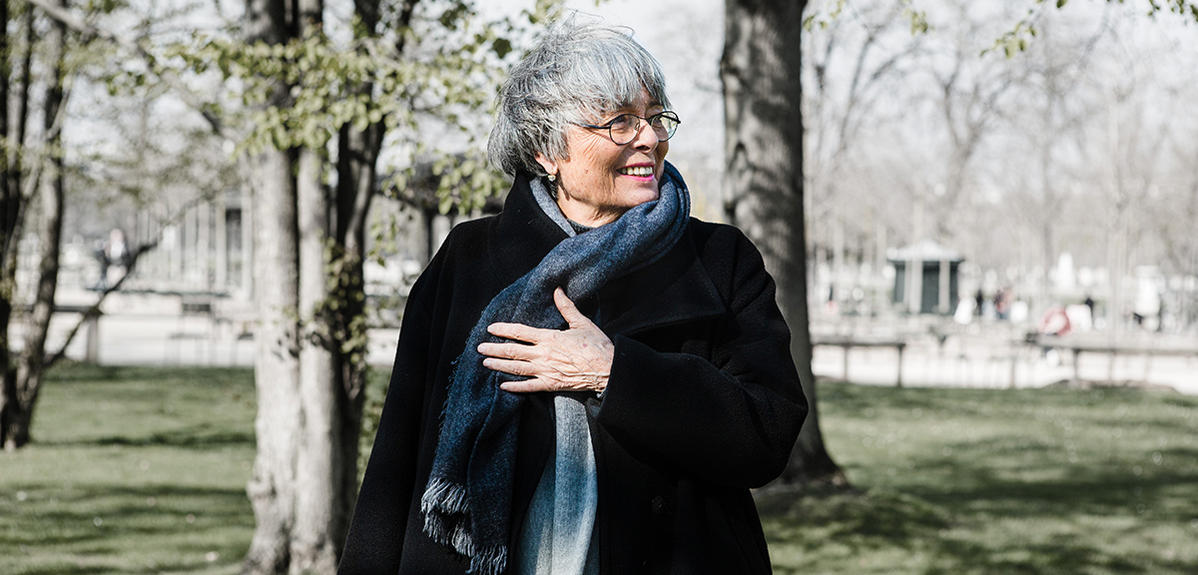
If France were to create the position of “Ambassador to the Oceans”, analogous to that of “Ambassador to the Poles” (established in 2017), Françoise Gaill would be the ideal candidate. This pioneer in the exploration of deep-sea environments and steadfast supporter of the Tara adventure now devotes considerable energy to defending the cause of the oceans on the international scene through the Ocean & Climate Platform. Part NGO and part think tank, the organisation, which she co-founded and has served as vice-president in charge of science since 2014, lobbied for the inclusion of the oceans on the list of topics to be discussed by the Intergovernmental Panel on Climate Change (IPCC), from which it was curiously absent, and acts as a liaison between the scientific and political spheres to save our endangered marine world.
“The ocean is the only natural environment on Earth that has not been completely anthropised – it’s not too late to save it,” Gaill asserts. A scientist who has transitioned from research laboratories to international conferences, she knows what she is talking about: as a marine biologist, she spent 40 years of her life at sea and under the sea, striving to understand its inner workings.
And yet, nothing seemed to predestine this Paris native, who grew up among a family of intellectuals, to dive headfirst into science. As a literary student in secondary school, her experience with a natural science teacher, “an extraordinary woman who was passionate about research and discovery”, convinced her to study biology at the former Université Pierre-et-Marie-Curie (now part of the Sorbonne) in Paris. In the late 1960s the life sciences were booming, and burst to the fore in the realm of ideas with the genetic code, the revolution of molecular biology and the awarding of the 1965 Nobel Prize in Medicine to the French biologist Jacques Monod.
A life at sea
In 1968, Gaill served an internship at the Roscoff marine biology station in northwest France, where she got a first glimpse of “the beauty of the life forms in the sea”, at the same time discovering it under the microscope. That same year she started a student job at the National Museum of Natural History “classifying bugs”. The following year the museum offered her the opportunity to participate in her first oceanographic expedition, in the North Atlantic, and she found her calling: from then on, her life would be dedicated to the oceans and scientific research. “I was lucky to have started out just when France was initiating research on deep-sea environments, through what would later be called IFREMER.”
Every summer for ten years she would spend a month sailing the Bay of Biscay (between Brittany and the Cantabrian Coast of Spain) aboard an oceanographic vessel, the Jean Charcot. “Those were other times,” the biologist recalls. The captain of this magnificent 80-metre ship played bridge and chose who would dine at his table!” Scientific methods were also quite different: “In those days, we had no qualms about scraping the ocean floor to collect samples, which would be totally unthinkable today.”
For the first time, these expeditions lifted the veil on the wealth of deep-sea ecosystems, at depths of more than 2,000 metres, yielding discoveries like a previously unknown family of ascidians. Between vertebrates and invertebrates, these marine creatures, which are found in every ocean (and include violets, or grooved sea squirts, a well-known delicacy in Marseille cuisine), occupy a special place in the evolution of living organisms: the larva has a spine, but the animal regresses as it grows, so that the adult has a “simple” flask shape with two orifices, oral and anal. “It’s one of the rare examples of involution, a kind of reverse evolution,” the biologist explains. “The tunicates (a variety of ascidians) that were discovered had a foot that anchored them to the ocean floor, something no one had ever seen before.”
These filter feeders would be main theme in Gaill’s first decade of research, from 1973 when she joined the CNRS marine invertebrates biology laboratory until the discovery of hydrothermal vents in the 1980s. “I soon diversified my approach,” she recounts, “by concentrating on morphogenesis, the way in which ascidians, and more specifically their digestive tube, develop.” After completing her thesis, in 1981 she decided to explore the field of theoretical biology and joined Yves Bouligand at the Centre for Experimental Cytology.
“At that time, it was discovered that the organisation of certain living tissues was very comparable to liquid crystals. The subject fascinated me, but in order to investigate it, I had to learn physics first.” Her favourite animal, the ascidian, remained her research model. Its body envelope, or “tunic”, is made up of cellulose, a natural polymer normally found in plants, and is formed according to the characteristic organisation of liquid crystals.
First descent into the deep
In 1982, the specialist in deep-sea environments left the water’s surface for her first descent into the ocean depths. She was invited to participate in one of the first US missions to explore the ecosystems of hydrothermal vents in the Pacific, a collaboration that would last more than ten years, and above all an unforgettable experience. “The mission was like nothing I had ever seen before,” the scientist recalls. “We took off with three vessels, one carrying the submarine that would take us down to depths of more than 2,500 metres, plus a ship from the Woods Hole Oceanographic Institution and another one from the Navy. A whole team of journalists had been invited… I discovered the power of the American media machine.”
Her first deep ocean dive left an indelible memory: “It took place one morning. I had had no liquid intake for 24 hours, since an eight-hour dive in a tiny capsule can be problematic for a woman… The Americans had put on my favourite music full blast in the cockpit while the submarine dove into the darkness. All of a sudden the music stopped, and through the porthole I saw phosphorescent streaks. When the spotlights were turned on, I discovered a new world, a world of black smoke, that I could never have imagined, and animals that looked like something straight out of science fiction.”
This soon led to the question of how to gather samples of organisms that are accustomed to living in very high temperatures and pressure levels. “To study them properly, we had to be able to bring the living animals up to the surface,” explains the biologist, who in 1984 founded the Adaptations to Extreme Environments (AMEX)1 laboratory that would develop methods and an array of specialised equipment for imaging and sampling in high-pressure environments.
The growing importance of ecology
Beyond the scientific experience, in the 1990s Gaill became increasingly aware of the impact of human activity on the marine environment, even in the seemingly remote ocean depths. “The turning point for me came after a decade of descents, when I noticed that we were leaving traces of our previous visits, in particular the ballasts used to reach deep waters. That really bothered me. But what infuriated me most was a proposal, fortunately abandoned, to turn the hydrothermal vents into a tourist attraction. At the time not many people in the scientific community felt the same way…”
In 1992, when the Rio Earth Summit put the “dirty” word “biodiversity” on the table, it was a subject of hot debate among traditional biologists, most of whom had trouble finding meaning in this new concept. According to Gaill, “We scientists were so busy classifying species and tucking them away in little boxes that we had missed the essential point: living beings interact and build the environment in which they live. And we were in the process of destroying that habitability.” At the same time, the biologist began to wonder why she was having so much trouble raising funds for research on deep-sea environments: “We no longer had the means to study the natural world, even though it was already being altered by mankind.”
In 2008 when the CNRS offered her a position as director of its newly-created Environment and Sustainable Development Department – an indication that ecology was at last becoming a field of research in its own right – she saw it as an opportunity to upend the status quo. The following year the department became the Institute of Ecology and Environment (INEE), and the biologist made her ambitions clear: “I saw myself as a facilitator. I wanted to grant our researchers the resources they needed, within a highly interdisciplinary approach uniting the geosciences, life sciences and human sciences.”
Still, although terrestrial ecosystems were relatively well understood, the marine world remained unknown, with the exception of coastal zones. But the threats that it faced, such as overfishing, pollution, and species extinction could no longer be ignored. As director of the INEE for five years, until she retired from the CNRS, Gaill also strove to ensure that the Tara project would thrive through genuine collaborations with researchers. “It wasn’t easy at first,” says the woman who is now a member of the Tara Ocean Foundation scientific committee. “A project sponsored by a fashion designer – in this case Agnès B, who purchased the schooner built by Jean-Louis Étienne – seemed frivolous for an academic institution.” Fifteen years and half a dozen ocean-going expeditions later, “The success of this new form of non-institutional oceanography, based on a public-private partnership, has been thoroughly demonstrated.”
An NGO for the oceans
After leaving the CNRS in 2013, Gaill naturally turned to Tara, and in particular its director Romain Troublé, with the aim of founding a science-based NGO dedicated to the oceans, and taking a broad view of the issues involved. “It was just before the COP21 in Paris, and we were dismayed that the ocean was conspicuously absent from the work of the IPCC, even though it plays a key role in climate regulation: it absorbs our planet’s excess heat, captures 30% of the atmospheric CO2 emitted by human activity… But for how much longer?”
Launched in 2014, the Ocean & Climate Platform remedied this oversight to promote the ocean in all of its aspects. “I had a vision of it as the new environment that needed to be saved,” Gaill recounts. “It was nearly too late for the Earth’s land surface, and it was obvious that we weren’t organised to address such a vast and complex subject, which involves so many players, including scientists, the fishing industry, transportation and tourism, governments, communities, etc.”
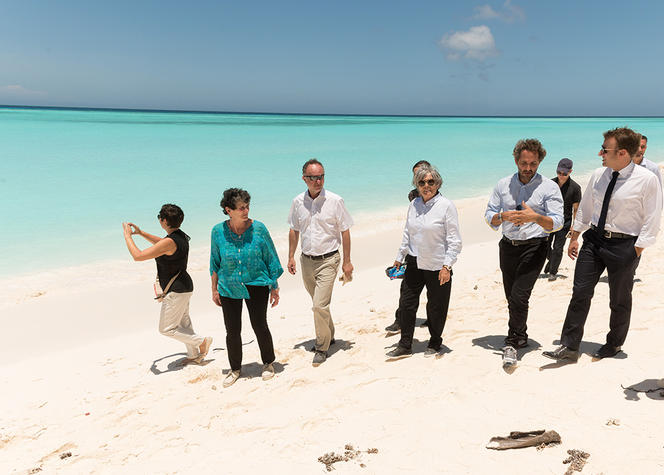
A non-profit organisation created with the backing of the CNRS and UNESCO Intergovernmental Oceanographic Commission, the Ocean & Climate Platform took on board everyone with an interest in the oceans: international NGOs like the WWF and Ocean Conservancy, scientific institutions (the CNRS, IFREMER, IRD and Scripps, a Californian biological research institute), maritime professionals, corporate foundations, to name but a few. In all, it brought together some 100 members from France and around the world. Its first achievement was the specific mention of the oceans in the preamble to the Paris Agreement adopted at the COP21, followed by the publication of a special IPCC report on the oceans and the cryosphere in 2019. “The ocean is now well represented in the IPCC’s reports,” rejoices Gaill, whose teams take advantage of every COP to host an “Oceans Day”, or marine-oriented “side” event to the world’s biggest climate conference.
Optimism against the tide
Never complacent, Gaill is now campaigning for the ocean to receive the attention it deserves in the reports of the IPBES, the “IPCC of Biodiversity”, in charge of monitoring the state of the planet’s ecosystems. “We need an ‘Ocean IPBES’,” she insists, pointing out that marine biodiversity remains largely unknown, even though it is directly impacted by the effects of human activity. “The reduced habitability of the oceans due to acidification, rising water temperatures, and loss of salinity from the melting of terrestrial glaciers all have direct effects on the ecosystems, resulting in the displacement or even the annihilation of species,” the biologist warns.
Humankind is also directly affected by these changes: beyond the resources that the oceans provide, coastal cities are also threatened by rising sea levels as a result of climate change. This is the focus of the Ocean & Climate Platform’s most recent initiative. Called “Sea’ties”, it unites some 40 medium-sized cities around the world so far, including Marseille, Brest, and La Rochelle in France, Lisbon, Stockholm, New Orleans and Bangkok. “The idea,” Gaill explains, “is to create an international network comprising scientists and city authorities as well as experts in various fields, in order to promote suitable solutions for the regions concerned by rising sea levels.”
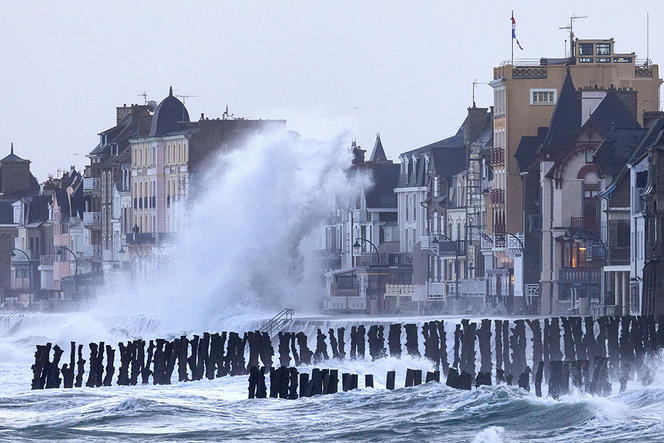
A globetrotter and tireless defender of the oceans (when we met with her, she had just returned from Madrid, where preparations were taking place for the 2022 UN Ocean Conference to be held in Lisbon, before heading off to the Mediterranean for Monaco Ocean Week), Gaill remains optimistic about the results of her efforts. “I think that we can still make a difference,” she says. “For the young generation the world over, fighting global warming and protecting the planet, with its biodiversity, are obvious necessities. Young people are convinced of the need for an ecological transition and are putting pressure on their parents, who are now at the helm in business and the public sector, to change the way we inhabit our planet.”
Her latest (small) victory is to have, along with others, won over the French president Emmanuel Macron to hosting the “One Ocean Summit”, a meeting of 40 heads of state held in Brest (northwestern France) last February. According to her, “It’s time for France, which is after all the world’s second-largest maritime power, to make strong commitments to saving the oceans.”
- 1. AMEX is now a team within the Laboratory of Biology of Aquatic Organisms and Ecosystems (BOREA – CNRS / French National Research Institute for Sustainable Development (IRD) / MNHN / Sorbonne Université).


